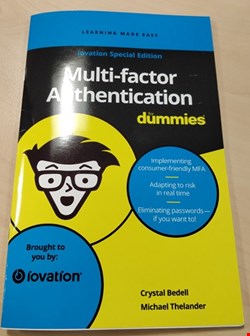
I was given the opportunity to review a book from the widely read “for dummies” series, on the topic of multi-factor authentication.
This book is aimed at IT administrators, engineers, project management or anybody with a base understanding of authentication terminology who may be seeking to bolster their defenses in this space.
I have been working with authentication solutions of more than ten years and have both led numerous projects multi-authentication projects and written materials such as this for various authentication vendors.
The authors of the book have made sure to keep the content of the book highly consumable, even for the most novice of reader, using relatable and easy to understand examples of the concepts in practice.
Some of the topics covered in the book go well beyond the traditional and delve into areas such as contextual authentication and decentralization, to name but a few. On one hand it’s a great reference material for what the authors describe as next generation multi-factor authentication; on the other the book is quick to skip over the basics of regular multi-factor authentication, betraying the title of the book.
In fact, very early in the book, the authors down-play the benefit of basic multi-factor authentication such as simple one-time password. This is in no doubt so that they can promote the more advanced features of the books’ sponsor Iovation, however it instantly dismisses one key point.
That research has shown that even the simplest of multi-factor authentication strategies, significantly reduces unauthorized access, without advanced features.
Overall the book is a good point of reference for some of the more advanced multi-factor authentication topics. Although for anyone deploying their first multi-factor authentication solution, I would recommend something covering the basic topics first.
